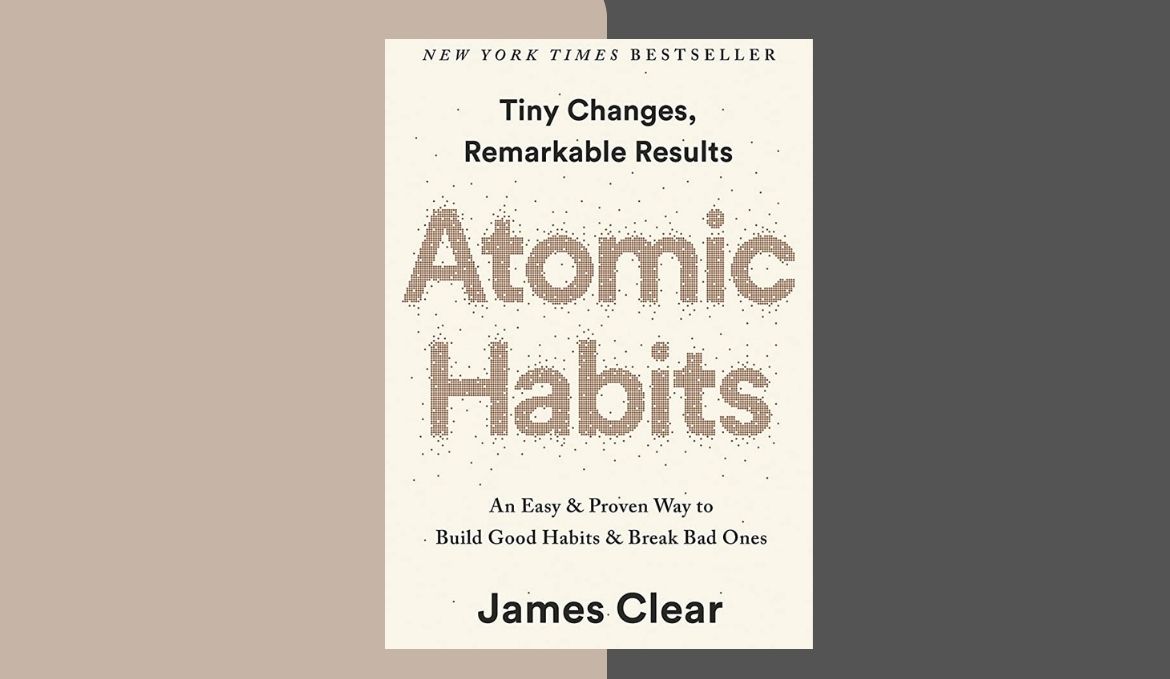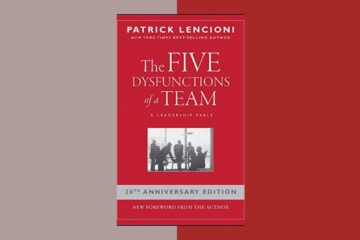In self-help literature, a work o building good habits is known as “Atomic Habits,” written by the wise and insightful James Clear. Its initial release in 2018 marked the beginning of an era of improved habits and better lives for those who seek positive change.
Explicitly, his work delves into the intricacies of habit formation, offering readers valuable insights and practical guidance on bringing about meaningful transformation in their lives. The author posits that altering our daily routines can significantly increase our chances of achieving success and happiness, no matter how small these adjustments may seem.
The book is divided into four parts, each focusing on a specific aspect of habit formation. The importance of cultivating healthy habits and breaking bad ones cannot be overstated, as these daily practices significantly impact our overall health and well-being. The development of positive habits can lead to the achievement of personal goals, the betterment of relationships, and increased productivity. Conversely, bad habits can hinder progress and prevent us from living our best lives.
With “Atomic Habits,” individuals can learn to create lasting change by constructing healthy routines and eradicating destructive ones. This literary masterpiece provides readers with practical methods and guidance for achieving personal goals, whether it be improving productivity, enhancing physical health, or attaining overall wellness.
The Four Laws of Atomic Habits
The detailed guidebook “Atomic Habits” by James Clear explains how to create positive habits and eliminate negative ones. The book is broken up into four sections, each of which focuses on a particular habit formation law. Understanding how habits function and how to use them to accomplish your goals requires a grasp of these laws.
Law 1: Make it Obvious
Making it obviousis the first rule of atomic habits. You must therefore make your habits clear and simple to follow. To assist you to remember to practice your habit, you can accomplish this by using visual cues, reminders, and other techniques. You may, for instance, put out your training clothing the night before if you want to start a daily exercise program, or you could leave your gym bag by the door. Your likelihood of maintaining your habit will increase if you make it evident.
Law 2: Make it Attractive
Make it attractive, according to the second law of atomic habits. This indicates that you should concentrate on forming lucrative and delightful behaviors. You can achieve this by incorporating enjoyment or fun into your routines. You may pick novels that you find intriguing or enjoyable if you want to start reading every day, for instance. Making your behaviors appealing will increase your motivation to maintain them.
Law 3: Make it Easy
Making it simple is the third atomic habit law. This implies that you should concentrate on forming routines that are easy to maintain and demand little work. You can achieve this by breaking your habits down into achievable, little steps. For instance, you could start by flossing just one tooth every day and progressively increase the number of teeth you floss over time if you wanted to make it a habit to do so. You’ll be more likely to maintain your behaviors over time if you make them simple.
Law 4: Make it Satisfying
Making it satisfying is the fourth atomic habit law. This implies that you should concentrate on forming rewarding and fulfilling behaviours. To do this, you can monitor your development and recognise your accomplishments along the road. You may keep a notebook to chart your progress and recognise each accomplishment if, for instance, you wanted to develop the daily writing habit. Making your habits pleasurable will increase your motivation to keep improving.
Each of these laws is essential for building good habits and breaking bad ones. You can create lasting change in your life by making your habits obvious, attractive, easy, and satisfying. Whether you want to improve your health, boost your productivity, or achieve a personal goal, these laws provide a roadmap for success.
In summary, the four laws of atomic habits are: make it obvious, make it attractive, make it easy, and make it satisfying. By following these laws, you can create habits that stick and achieve your goals. Whether you’re just starting out on your habit formation journey or you’re looking to take your habits to the next level, these laws provide a framework for success. So start small, be consistent, and watch as your habits transform your life.
Breaking Bad Habits

Overcoming harmful habits is a crucial part of developing oneself personally. Our success, relationships, and health can all suffer from bad habits. They may prevent us from reaching our objectives and leading the lives we want. Understanding how habits operate and how to break them is therefore essential.
James Clear offers a helpful framework in his book “Atomic Habits” for kicking unhealthy habits. His method is predicated on the notion that habits are created by a habit loop that consists of a cue, a need, a response, and a reward. We need to stop this cycle and substitute a more beneficial routine in order to break a bad habit. The four steps to kicking bad behaviors are as follows:
Identify the Cue
The first step to breaking a bad habit is identifying the cue that triggers it. A cue is a signal or trigger that prompts us to engage in a particular behavior. For example, if you habitually snack on junk food in the afternoon, the cue may be feeling bored or stressed. By identifying the cue, we can become more aware of our behavior and break the habit loop.
Crave the Outcome
The second step is to crave the outcome that we want to achieve. Habits are formed because they provide a reward or benefit. To break a bad habit, we need to associate a negative outcome with the behavior. For example, if you have a smoking habit, you may crave the short-term pleasure of nicotine but associate it with long-term adverse effects, such as lung cancer or heart disease. By craving the outcome, we can shift our focus from short-term pleasure to the long-term consequences.
Interrupt the Habit Loop
Stopping the habit loop is the third step. We can begin interrupting the habit loop once we have identified the cue and linked the behavior to a negative outcome. This necessitates locating a means of putting an end to the behavior before it becomes automatic. For instance, if you regularly check your phone before bed, you can break the cycle by turning it off an hour before bed or leaving it in a different room. We can break the automatic response and make room for a better habit by interrupting the habit loop.
Replace the Habit with a Better One
The replacement of the bad habit with a better one is the fourth and final step. It is difficult to break a habit, but a new pattern that offers a similar benefit or reward can be used in its place. For instance, if you frequently snack on junk food in the afternoon, you can substitute a fruit or nut-based snack for it. We can start a positive behavior cycle that leads to long-term success by replacing the bad habit with better one.
Habits in Practice
Habits are a fundamental component of our existence, profoundly influencing our actions and characterizing our identity. In his tome entitled “Atomic Habits,” James Clear offers readers a pragmatic guide on comprehending the mechanics of habituation and constructing favorable ones.
Clear avers that incremental adjustments can have a consequential effect on our lives, accentuating the significance of creating “atomic habits” that are easy to institute but yield substantial results. In this article, we will delve into techniques for integrating atomic habits into our daily routine and strategies for perpetuating good habits while thwarting negative ones.
Integrating Atomic Habits into Daily Life: Tips and Techniques
- Identify your objectives: Before embarking on a quest to establish atomic habits, it is imperative to pinpoint your objectives. What are your aspirations? In which aspects of your life would you like to effectuate improvements? Once you have identified your goals, you can proceed to devise habits that will facilitate their achievement.
- Commence with small changes: Atomic habits are predicated on implementing incremental changes that culminate in significant outcomes. Initiate your habit-building endeavors with a habit so trivial that it is virtually effortless to perform. For example, if your goal is to exercise more frequently, commence with doing one push-up per day. Although this may seem minuscule, it will aid in fostering momentum and ultimately pave the way for more significant habits.
- Formulate a plan: Once you have identified your objective and the atomic habit you wish to establish, it is imperative to craft a plan. When will you perform your habit? What measures will you take to remind yourself to do it? How would you feel if you miss a day? Designing a plan will bolster your ability to adhere to your habit and heighten the likelihood of its perpetuation.
- Monitor your progress: Monitoring your progress is a pivotal aspect of developing atomic habits. It enables you to discern how far you have progressed and fosters a sense of accomplishment. Use a habit tracker or a journal to log your progress and ensure that you commemorate your successes along the way.
Perpetuating Good Habits and Mitigating Negative Ones: Strategies and Recommendations
- Engage in self-awareness: Cultivating self-awareness is paramount when it comes to perpetuating good habits and mitigating negative ones. Attend to your thoughts, feelings, and conduct. If you detect that you are veering towards a deleterious habit, take measures to rectify the situation.
- Employ positive reinforcement: Positive reinforcement is a potent instrument in establishing good habits. Reward yourself when you accomplish something and celebrate your successes along the way. This will foster motivation and commitment to your habits.
- Avoid temptation: Temptation can be a substantial impediment when it comes to perpetuating good habits and thwarting negative ones. Endeavor to circumvent situations that may precipitate a negative habit and devise measures to facilitate the performance of good habits.
- Forge a support network: Establishing a support network can help you remain on track and make it easier to perpetuate good habits. Surround yourself with individuals who share your objectives and encourage you to adhere to your habits.
Incorporating atomic habits into your daily routine can have a momentous effect on your overall well-being. By identifying your goals, commencing with small changes, formulating a plan, and monitoring your progress, you can establish atomic habits that engender significant outcomes. Moreover, practicing self-awareness, utilizing positive reinforcement, avoiding temptation, and forging a support network can facilitate the perpetuation of good habits while circumventing negative ones.
Remember, building habits requires time and effort, but the rewards are invaluable. With patience and persistence, you can cultivate atomic habits that enable you to realize your objectives and lead a more fulfilling.
The Importance of Building Good Habits
Better Health: Beneficial routines like practicing good eating habits, normal activity, and getting sufficient rest can prompt better well-being. Taking on a sound way of life can assist with forestalling constant sicknesses, working on psychological wellness, and incrementing the future.
Efficiency Gain: Good habits like prioritizing tasks, creating objectives, and managing our time can all make us more efficient. By forming healthy habits, we may successfully concentrate on our goals and accomplish them.
Enhanced Self-Control: Self-discipline is required to form healthy habits. We can train our minds to resist temptation and delay gratification by practicing self-discipline. This may assist us in breaking bad habits and making positive life changes.
Better Connections: We can improve our relationships by practicing good habits like active listening, being empathetic, and expressing gratitude. We can communicate effectively and establish trust with others by developing good habits.
How to Build Good Habits
Start Small: Identify one small habit you would like to develop. Focus on that habit and make it a part of your routine. Once you have established the practice, you can add another one.
Make it a Daily Practice: Consistency is key to building habits. Make it a daily practice to perform the habit simultaneously every day. This will help you establish the pattern and make it a part of your routine.
Use Triggers: Triggers are cues that remind you to perform the habit. Use triggers such as an alarm, a sticky note, or a reminder on your phone to help you remember to complete the habit.
Hold Yourself Accountable: Hold yourself accountable for your habits. Keeping track of your progress and celebrating your successes is important. Be kind to yourself if you make a mistake. Take advantage of the opportunity to learn and improve instead.
Positive Encouragement Around You: Surround yourself with those who encourage and reinforce your positive habits. A friend, relative, or member of your family can make up this group. Your motivation and commitment to your habits can both be boosted by a supportive setting.
Conclusion
Building good habits is essential for a healthy, happy, and successful life. By developing good habits, we can improve our health, productivity, self-discipline, and relationships. However, building good habits is not easy. It requires discipline, dedication, and commitment. By starting small, making it a daily practice, using triggers, holding yourself accountable, and surrounding yourself with positive reinforcement, you can develop good habits that will positively impact your life.
By following the four steps outlined by James Clear in his book “Atomic Habits,” we can break the habit loop and replace bad habits with better ones. Identifying the cue, craving the outcome, interrupting the habit loop, and replacing the habit with a better one is critical to breaking bad habits. With consistency and persistence, we can transform our lives one habit at a time. Remember, good habits are a powerful tool for personal growth and development. Start building them today!



